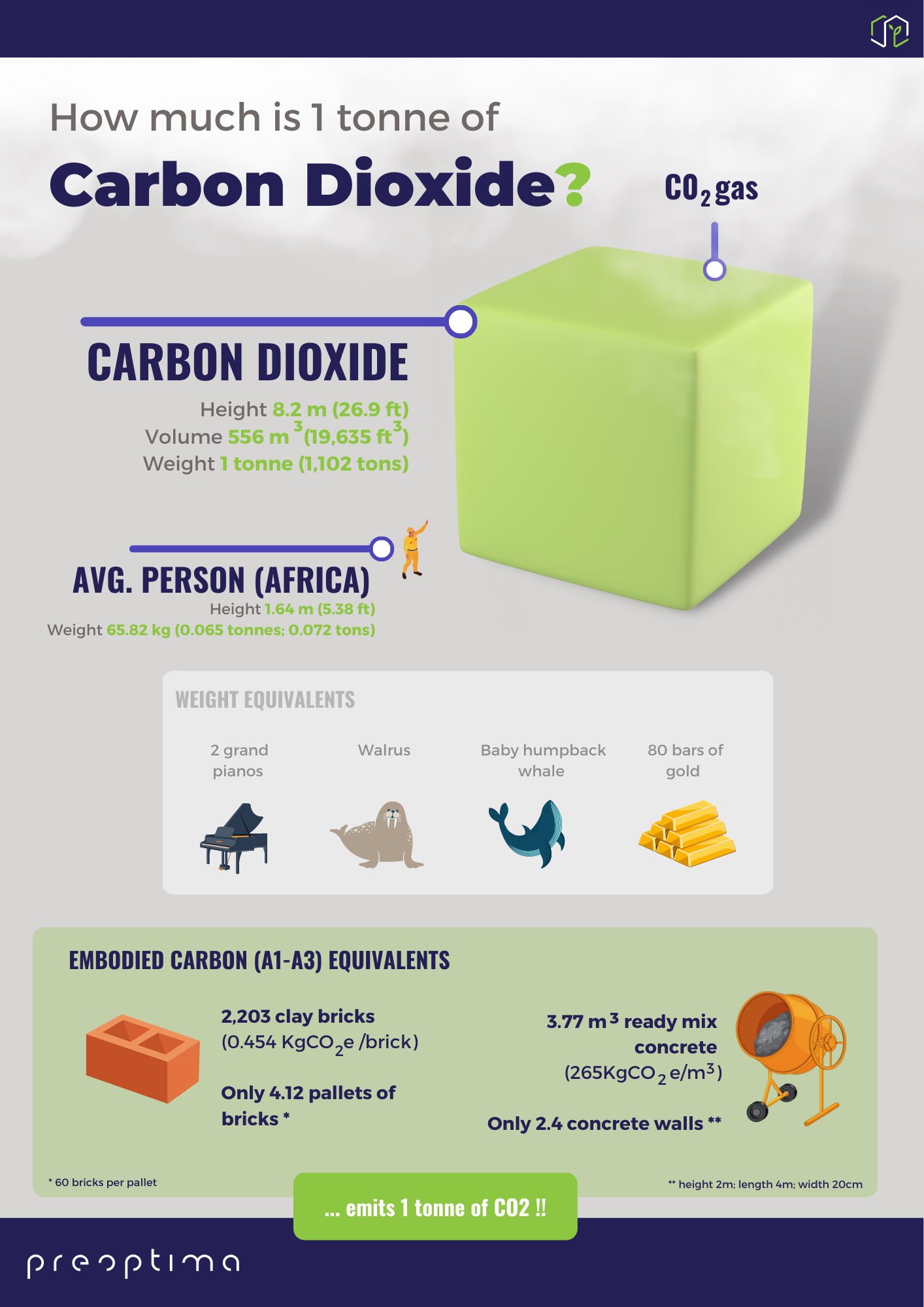How much is 1 tonne of carbon dioxide?
Read Time 5 mins | Written by: Alex Bantock
It's important to first clarify one thing: carbon dioxide (CO2) is not inherently bad. In fact, it is one of Earth's most important greenhouse gases and acts as a vital component of our planet's life-support system. CO2's ability to trap some of the sun's heat within our atmosphere, preventing it from escaping back into space, is actually a good thing and has to date kept the Earth's temperature relatively stable and suitable for life.
But, like many good things, it is possible to have too much of it.
The problem of 'too much'
The issue arises with the rapid increase in CO2 concentrations in our atmosphere due to human activities, primarily burning fossil fuels (like coal, oil, and natural gas) and deforestation. This accelerated accumulation of CO2 has two major effects:
-
Enhanced Greenhouse Effect: The extra CO2 increases the greenhouse effect, trapping more heat and leading to a rise in Earth's average temperature - this is what we refer to as global warming. As the Earth warms, it results in significant climatic changes, which can lead to more frequent and severe weather events, such as hurricanes, droughts, and heat waves. It also causes the polar ice to melt, leading to rising sea levels that can result in coastal flooding.
-
Ocean Acidification: The oceans absorb about a quarter of the CO2 that we release into the atmosphere. When CO2 dissolves in seawater, it forms carbonic acid, leading to higher acidity levels. This acidification harms marine life, especially organisms with calcium carbonate shells or skeletons, including molluscs (like oysters, clams, and snails), corals, and certain types of plankton. These organisms are integral to the marine food chain, so their decline can impact the ecosystem, including commercially important fish species.
As a result, the dramatic increase in atmospheric CO2 concentrations caused by human activities is driving negative changes in our climate and ecosystems. That's why firstly avoiding and then reducing CO2 emissions is such an essential part of mitigating climate change and preserving the status of our planet.
How much is 1 tonne of CO2
In order to truly appreciate the impact of something, you need to be able to understand and visualise it. When it comes to a gas, that can be difficult, which is why it is important to translate an intangible gas into something that we can relate to.
So, how much is 1 tonne (1.102 US ton) of CO2?
1 tonne of CO2 gas would occupy a space with a volume of 556 m3, that's a cube with 8.2 m dimensions which would be approximately 5 times taller and 15.4 times heavier than the average person in Africa! Picturing 1 tonne of CO2 as things of equivalent weight is also super impactful, like 2 grand pianos, a walrus, a baby humpback whale, or 80 bars of gold.

See infographic references at the end
When we consider the weight of carbon in this context, we realise how significant our impact on the environment truly is.
Picture this: On a relatively small scale, just 4.12 pallets of bricks and 2.4 concrete walls (infographic) can produce 1 tonne of CO2e. That's a lot of CO2 for just the materials to make up a small portion of a building, which is why the direct emissions needed to construct new buildings in the UK in 2018 were estimated between 17.0 and 18.5 MtCO2e, with domestic buildings accounting for 9.4 and 8.9 MtCO2e respectively.
Thinking of 17 million 'walruses-worth' of CO2 being emitted in one year is astonishing, and that was just the upfront (A1-A5) emissions of new construction in the UK alone. Visualising the built environment's impacts in this way really brings home how serious the emissions from our sector are and why we need to urgently mitigate them.
Next time you enter a building, consider the weight of the carbon that has been emitted for it to be there, from the concrete in the walls to the light bulb in the ceiling. Remember the unseen carbon emissions linked to the materials, construction, operation, and demolition of that building. And consider how your actions can minimise these emissions, from being an architect or developer yourself to being just an occupant.
We all have a role to play in reducing the weight of our carbon footprints. By making conscious choices about how we build and interact with the built environment, we can lighten the load on our planet. After all, every piano, every walrus, every baby whale, and every bar of gold less in our atmosphere makes a world of difference. The size of carbon matters, and so do our choices.
We'd love to hear from you!

